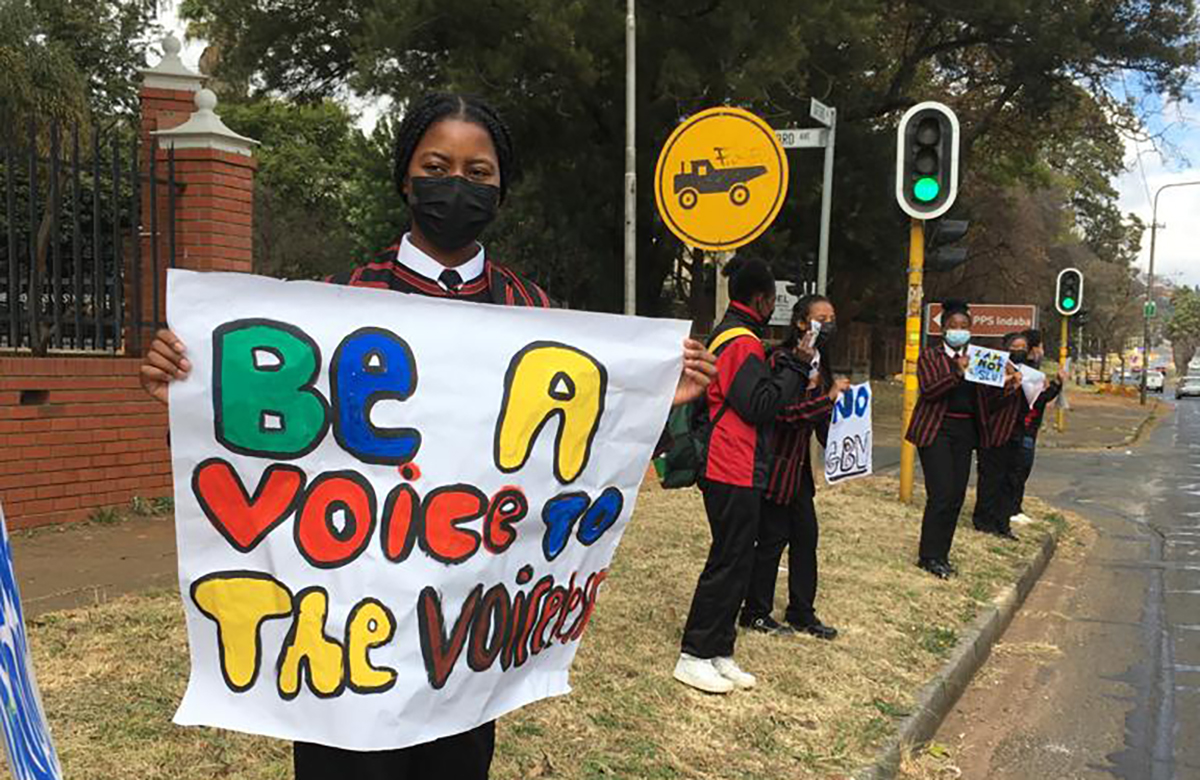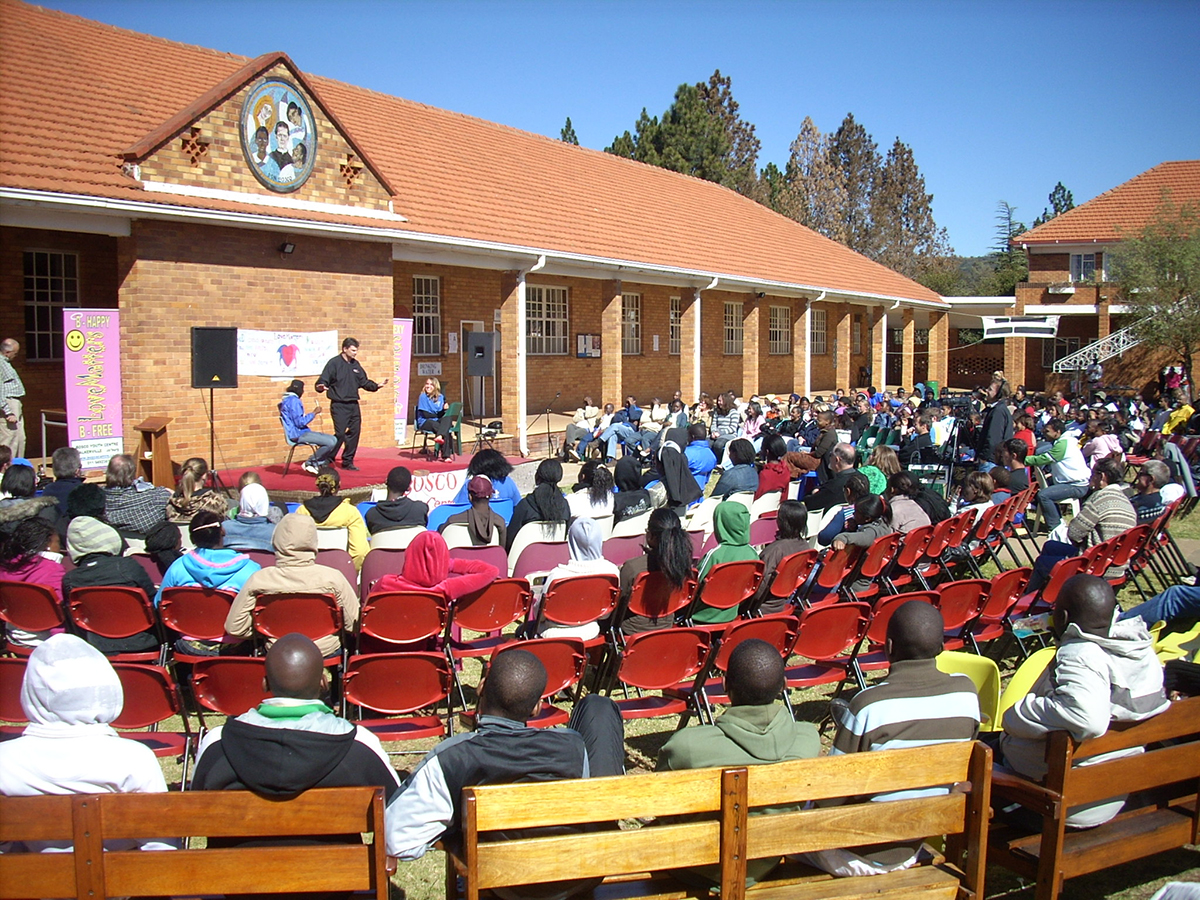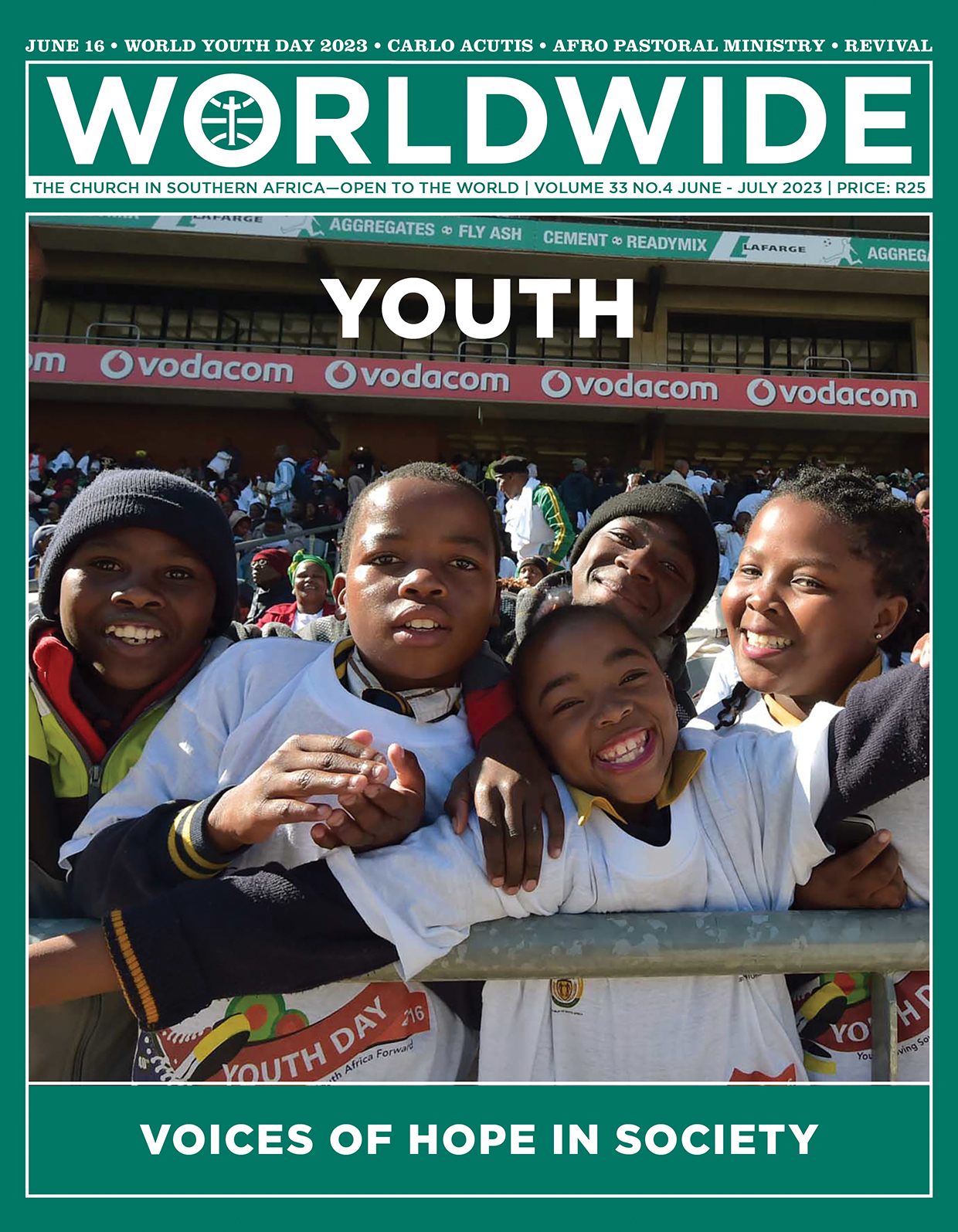
YOUTH: VOICES OF HOPE IN SOCIETY
The front cover image shows youngsters commemorating Youth Day at Orlando Stadium in Soweto, the same location where an uprising against the use of Afrikaans as a vehicular language of education took place in 1976.
Some might see June 16 only as a public holiday, nevertheless, gratitude goes to those who strived on behalf of the youth for an inclusive and better education. Many youths today still face great challenges and need strong support in order to receive an integral formation which prepares them for a bright future.
SPECIAL REPORT • WORLD YOUTH DAY 2023
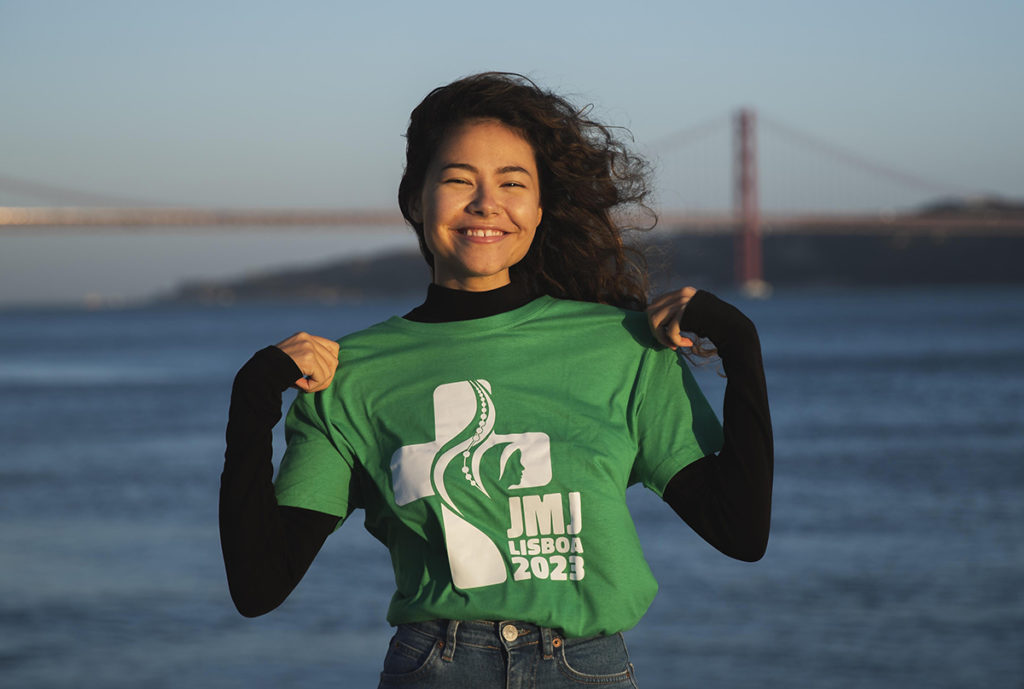
The Feast of the Youth
World Youth Day (WYD) is a religious and cultural event that brings together hundreds of thousands of young people from all over the world. This year it will take place in Lisbon, Portugal, from 1–6 August. It is an initiative for the evangelization of the world’s youth, an invitation for young people to meet Jesus Christ, to be missionary disciples and to collaborate in the construction of a better world more just, fraternal, peaceful and in solidarity
BY BRO. BERNARDINO FRUTUOSO MCCJ | JOURNALIST, LISBON, PORTUGAL
IN 1984, St John Paull II organised a gathering in Rome on Palm Sunday, to celebrate the Jubilee of young people as part of the Holy Year of Redemption 1983–1984. Sixty thousand pilgrims were expected, but 250 000 from many countries of the world took part. The experience was so significant for the Church that the Pope decided to repeat it the following year. At that meeting, 300 000 young people arrived in Rome and were distributed among the churches of the city for moments of prayer and catechesis, followed by a celebration with the Holy Father in St Peter’s Square. Later that year, on 20 December 1985, the Polish Pope wrote an Apostolic Letter to the youth of the world and announced the institution of WYD.
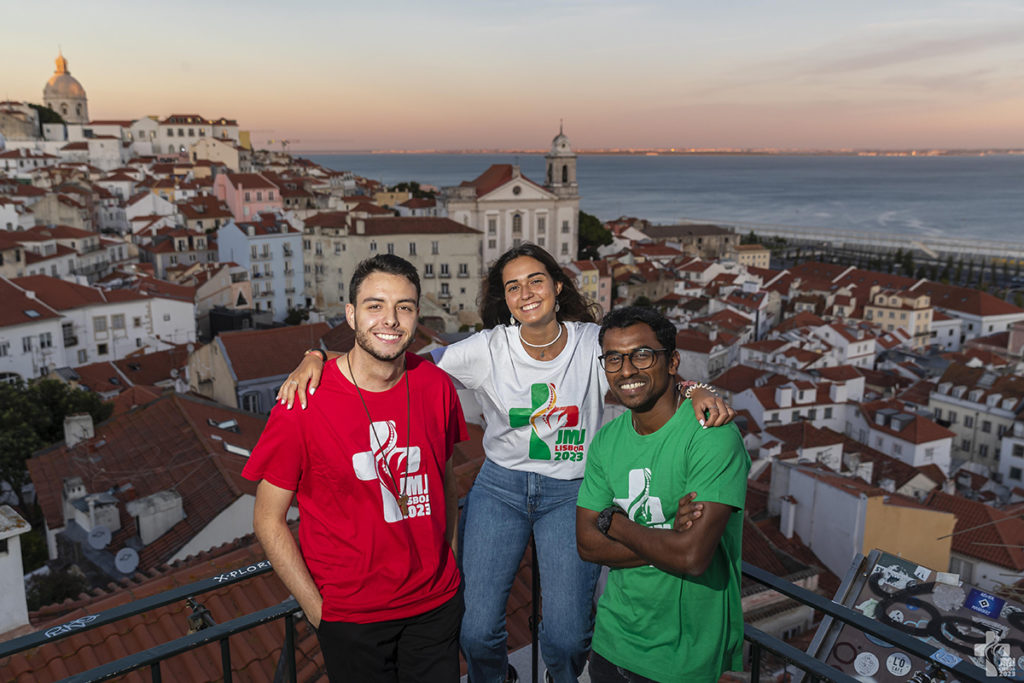
St John Paul II explained the creation of WYD in these words: “All young people should feel accompanied by the Church; it is for this reason that the whole Church, in union with the Successor of Peter, feels committed, on a worldwide level, to support young people, in their concerns and requests, in their dreams and hopes, to respond to their aspirations by communicating them—through appropriate formation—the certainty that Christ is truth and love. In fact, throughout these decades, WYD has shown itself to be a laboratory of faith, a place of birth for vocations to marriage and to the consecrated life, and an instrument of evangelization and transformation of the Church.
The history of WYD
The first WYD event was held in Rome, in 1986. The following year, the first international edition of WYD, was held in Buenos Aires, Argentina, where some 900 000 youth attended. This was followed by meetings in Santiago de Compostela, Spain (1989), Czestochowa, Poland (1991), and Denver, United States (1993). In 1995, the meeting was organized in Manila, Philippines, the country with the highest percentage of Catholics in Asia. In the sending-off Mass closing WYD, the most attended ever, over four million pilgrims participated, many of whom came from social backgrounds marked by poverty and inequality.
WYD is, undoubtedly, an opportunity to celebrate the joy of faith in a youthful atmosphere
The following WYDs were in Paris, France (1997), Rome (2000), and Toronto, Canada (2002). This was the last WYD that John Paul II presided over. The Pope again asked young people to commit themselves to the building of a more fraternal world, in solidarity. The first WYD that Pope Benedict XVI presided over was held in Cologne, Germany, his home country, in 2005 and the first in Oceania was in Sydney, Australia in 2008. The next meeting was held in Madrid, Spain, in 2011. This would be the last one presided by Benedict XVI, who told the young pilgrims that “faith is not limited to providing some information about the identity of Christ, but implies a personal relationship with Him”.
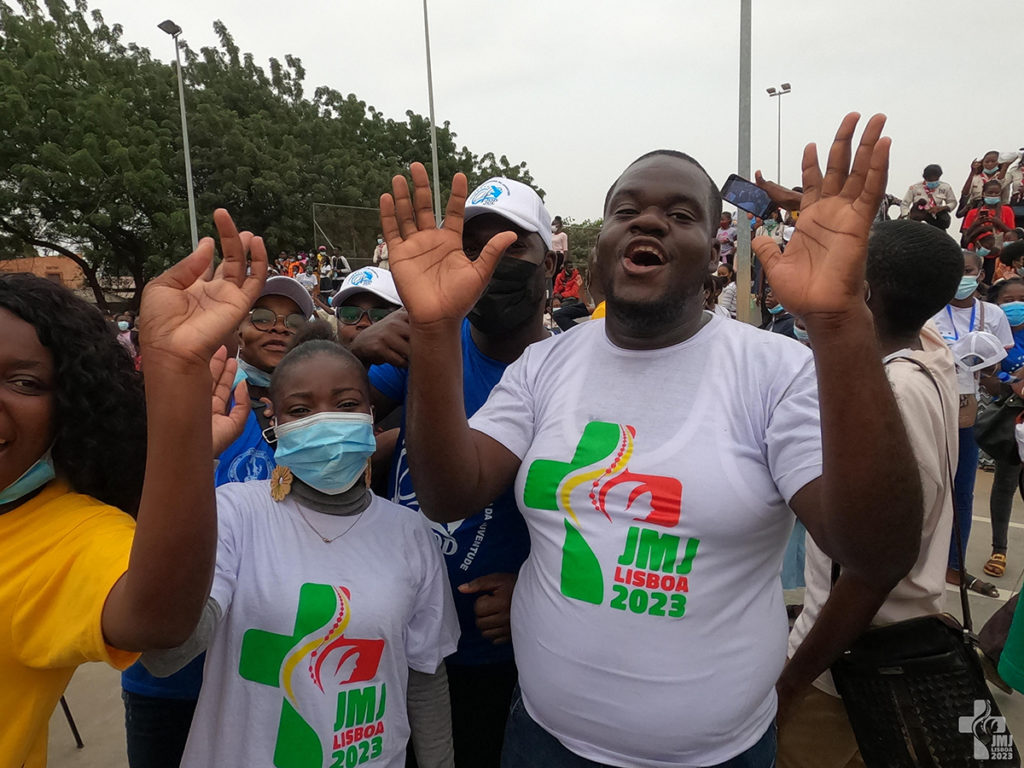
Credit: JMJ Lisboa 2023/Flickr.
The first WYD attended by Pope Francis took place in Brazil, in South America, his native continent, in 2013. More than three million pilgrims attended the vigil and the sending-off Mass in Copacabana Beach, Rio de Janeiro. In an atmosphere of celebration and prayer, the Pope stressed that “the Gospel is for all, not just for some” and asked young people to be “protagonists of change”.
In January 2019, the first WYD in Central America was held in Panama. This edition had an important Marian mark. At the vigil with young people, Pope Francis presented the Virgin Mary as “the greatest influencer in history”. In this meeting, the Pope announced that the next WYD would be held in Lisbon, Portugal.
The symbols of WYD
Two symbols have accompanied each edition of WYD during the last several years: the Pilgrim Cross and the Marian icon called Salus Popoli Romani (Salvation of the Roman People). In the months leading up to WYD, these two symbols travel in pilgrimage to various places around the world, but above all to the dioceses of the hosting country where the WYD will take place. These symbols, signs of faith and hope, are heralds of the Gospel and accompany young people, in a special way, in the realities in which they live. They provide powerful moments of spirituality and evangelization which help young people to strengthen their faith. “One of the best fruits of WYD is the witness of youthfulness in the Church, that young people are available and want to welcome the living Christ into their hearts and witness Him to the youth of the whole world”, says Bishop Américo Aguiar, President of the WYD Lisbon 2023 Foundation and Auxiliary Bishop of Lisbon.
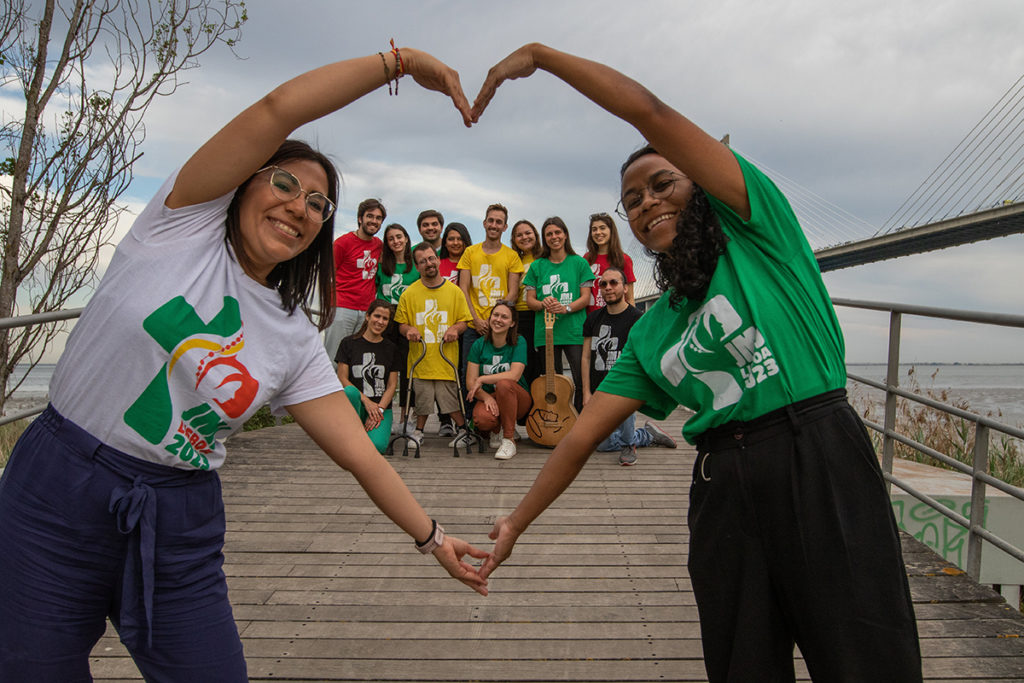
Credit: Elsa Vitorino /JMJ Lisboa 2023/Flickr.
The Pilgrim Cross was built for the Holy Year in 1983. It is 3.8 meters high and was entrusted to young people on Palm Sunday the following year by the then Pope John Paul II. The aim was that it should reach the whole world through the hands of young people. Since then, this wooden cross has been on a pilgrimage through five continents and almost 90 countries. At each WYD it visits youth environments and passes through parishes, schools, universities and other institutions. It has been transported by train, boat and even by more unusual means such as sledges, cranes, ox carts and tractors. It has travelled through the jungle, through churches, juvenile detention centres, prisons, schools, universities, hospitals, monuments and shopping centres. Recently, in Portugal, it has even been to a discotheque.
Two symbols have accompanied each edition of WYD during the last several years: the Pilgrim Cross and the Marian icon
The Pilgrim Cross has also been a bearer and a sign of hope in particularly sensitive places. For example, shortly after 11 September 2001, it travelled to Ground Zero, in New York, where the terrorist attacks that killed almost 3 000 people took place. It also went to Rwanda in 2006, after the country had experienced a fratricidal genocide because of the civil war.
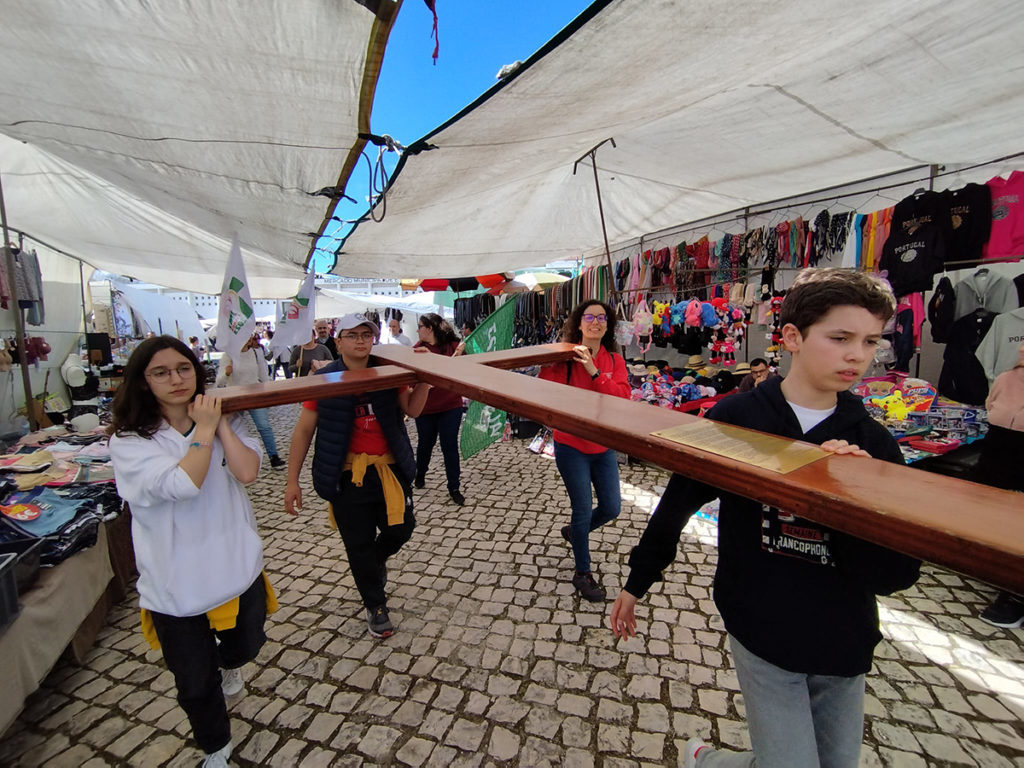
Credit: Organising Diocesan Committee Aveiro/ JMJ Lisboa 2023/ Flickr.
The Cross is a symbol of God’s love manifested in Jesus, who gave himself up to death to save us and to make himself one with our human condition. The Cross is also the place of encounter between the Son of God and humanity; it sensitises us and takes us to encounter our brothers and sisters, walking together with them, sharing their pains, sorrows and difficulties in our earthly pilgrimage.
At WYD 2000 in Rome, another symbol was presented: the icon Salus Populi Romani (Salvation of the Roman People, in Latin). It is a replica of the painting kept in the Pauline Chapel at the Basilica of Saint Mary Major in Rome. Tradition says that the original icon was painted by the evangelist St Luke. This image has been a sign of protection and God’s love expressed through the care given by Mary, Mother of Jesus for many centuries, especially for the people of Rome. It is an ancient tradition to carry the icon in procession through the streets of Rome to ward off danger and misfortune or to put an end to plagues.
It was for these reasons that, in 2003, St John Paul II wanted this sign of God’s love and care expressed through the Virgin Mary, to be carried all over the world together with the symbol of the Pilgrim Cross. On 13 April 2003, the incumbent Pope John Paul II presented these symbols of WYD to the young people who were preparing for WYD 2005 in Cologne, Germany. At the end of the Angelus prayer, the Pope announced: “To the delegation coming from Germany, I entrust you with the Icon of Mary. From now on, together with the Cross, it will accompany the WYDs. Behold your Mother! It will be a sign of the maternal presence of Mary at the side of the young people, called, like the Apostle John, to welcome her into their lives. He added: “May the Cross of Christ show you the way, in the sometimes difficult choices of life, and may the Blessed Mother be for you the model of beautiful love. Here is your Mother!. Let us entrust to her the hopes and future of young people in every part of the world.”
WYD Lisbon 2023
The 2023 edition of WYD was originally scheduled for 2022, but it was postponed due to the Covid-19 pandemic. It will be held in Lisbon, Portugal, from 1–6 August. Its theme, chosen by Pope Francis, is ‘Mary got up and left in haste’ (Lk 1: 39). This text refers to the account of the visitation of Mary to her cousin Elizabeth, an episode which follows the Annunciation (the theme of the last WYD in Panama). In the scene of the visitation, Mary presents herself both as a woman of charity and a missionary. Leaving in haste, without fear and with joy, is the attitude which summarizes Pope Francis’ indications for WYD Lisbon 2023, challenging the youth to be active and courageous missionaries in today’s world. In his Apostolic Exhortation Christus Vivit, the Pope writes: “Where does Jesus send us? There are no borders, no limits: He sends us everywhere. The Gospel is for everyone, not for some. He invites us to be fearless missionaries wherever we are and in whatever company we find ourselves: in our neighbourhoods, in school or sport or social life, in voluntary work or the workplace. Wherever we are, we always have an opportunity to share the joy of the Gospel” (VC 177).
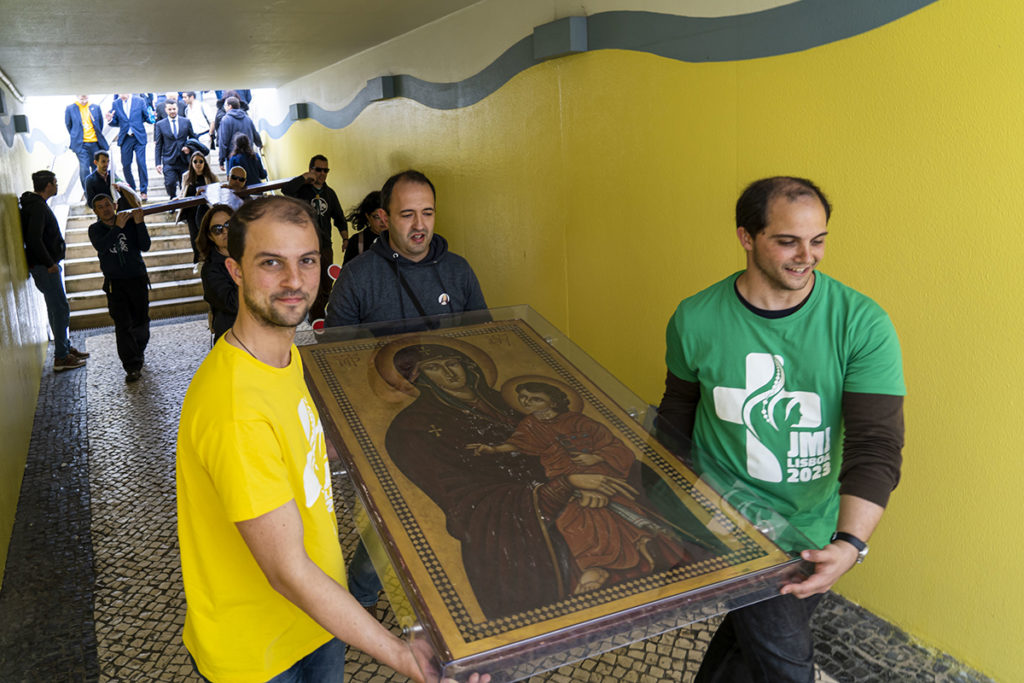
Young pilgrims from all over the world will be accommodated mostly in public and parish facilities or homes of families. During the days of WYD, various activities and meetings will be available, to facilitate the encounter of young people with God, active participation in the life of the Church, and commitment to the transformation of the world and evangelization. There will be moments of prayer—celebrations presided over by the Pope, such as the welcoming and opening ceremony, the Way of the Cross, the vigil and, on the last day, the sending-off Mass—catechesis and religious formation meetings, forums for dialogue and sharing of experiences, opportunities to celebrate the sacrament of reconciliation (the confessionals to be used at the Park of Forgiveness of Lisbon WYD were built by inmates of prisons), spaces for cultural exchange and leisure. These various initiatives seek to fulfil the ultimate purpose of WYD: to enable young people to meet Jesus Christ and to take the Gospel of joy, in a renewed way, to the world.
“We need to tear up what is customary, and innovate, and to risk what is different,” said Bishop Américo Aguiar, responsible for organizing WYD Lisbon 2023. This WYD will pay special attention to the theme of integral ecology and sustainability. Pilgrims registered in WYD, as well as volunteers, the organizing team and partners, have been invited to ‘plant trees in the community’, dedicating them to WYD Lisbon.
WYD is, undoubtedly, an opportunity to celebrate the joy of faith in a youthful atmosphere and a space for the Church and society to listen, in a spirit of synodality, to the voice of the youth, as Pope Francis states: “Dear young people, what are your passions and dreams? Make them stand out and, through them, propose to the world, to the Church, to other young people, something beautiful in the spiritual, artistic and social fields” (Message of Pope Francis in 2020 for the 35th WYD). WYD in Lisbon awakens our hope and makes us realize, once again, that young people are the gift of the Church and, with their talents and energy, they collaborate in building a Church where communion is experienced and which goes forth building a better world, a more peaceful, fraternal, just and united world.

